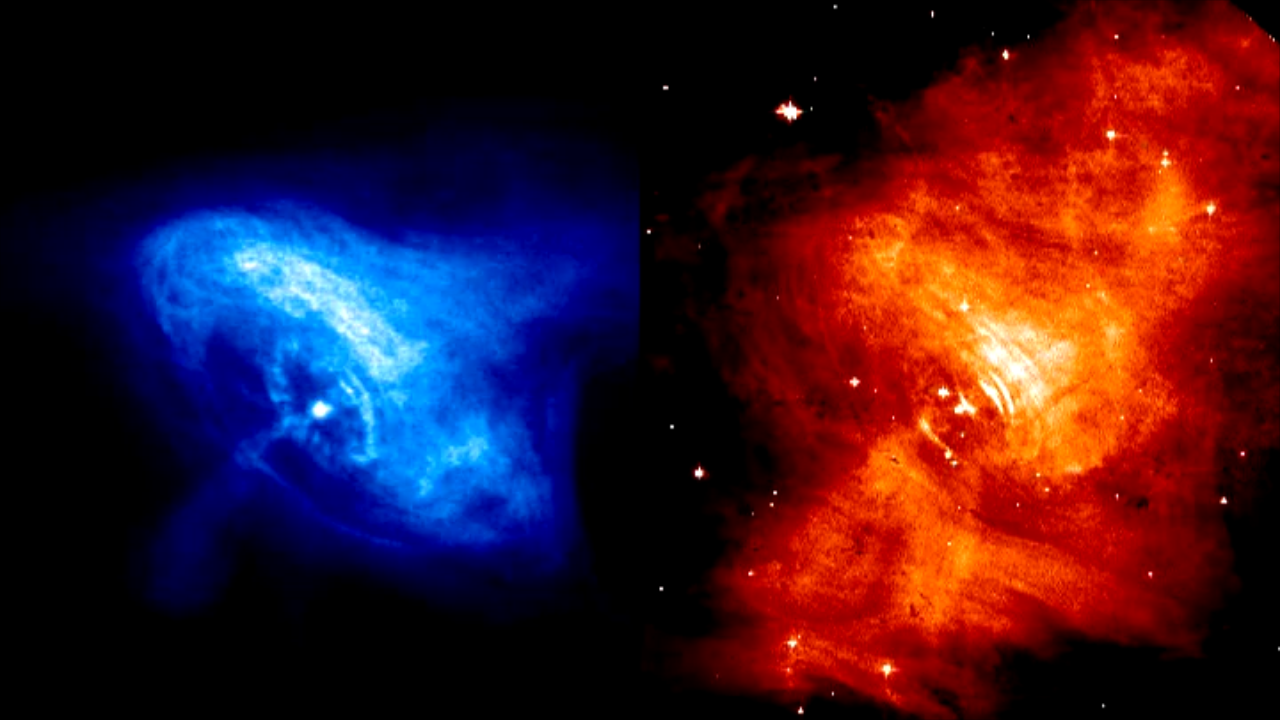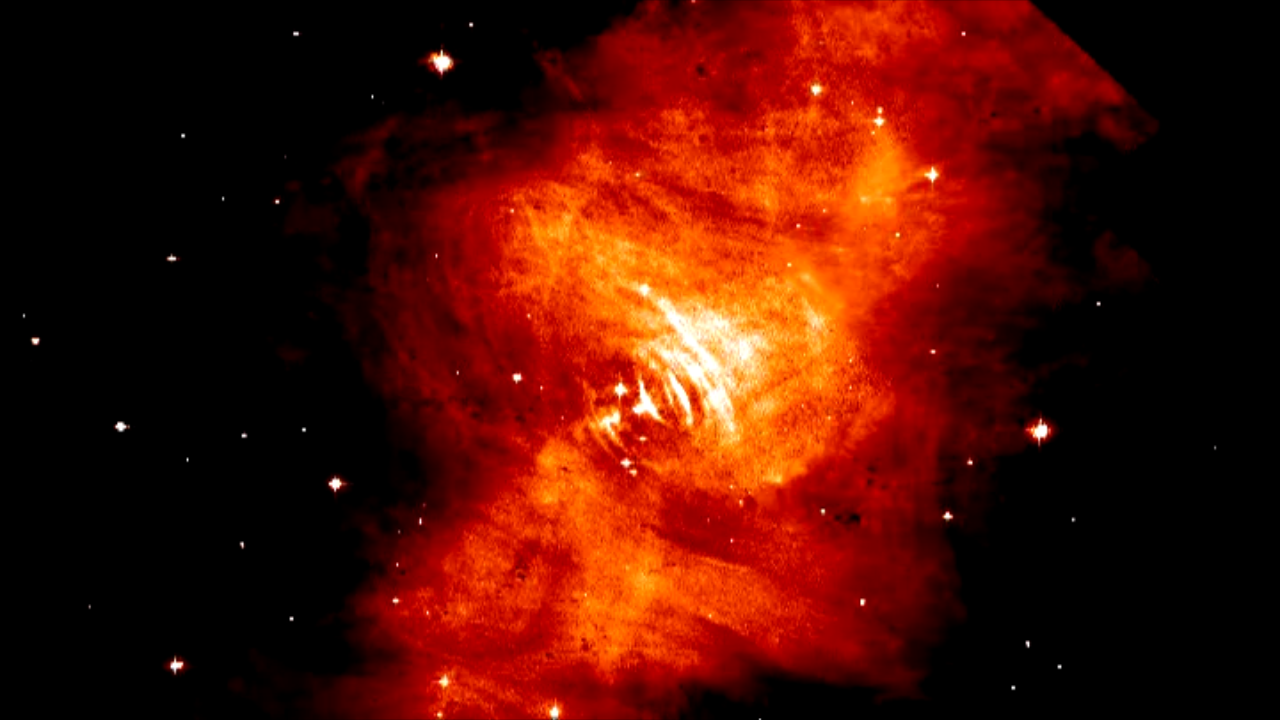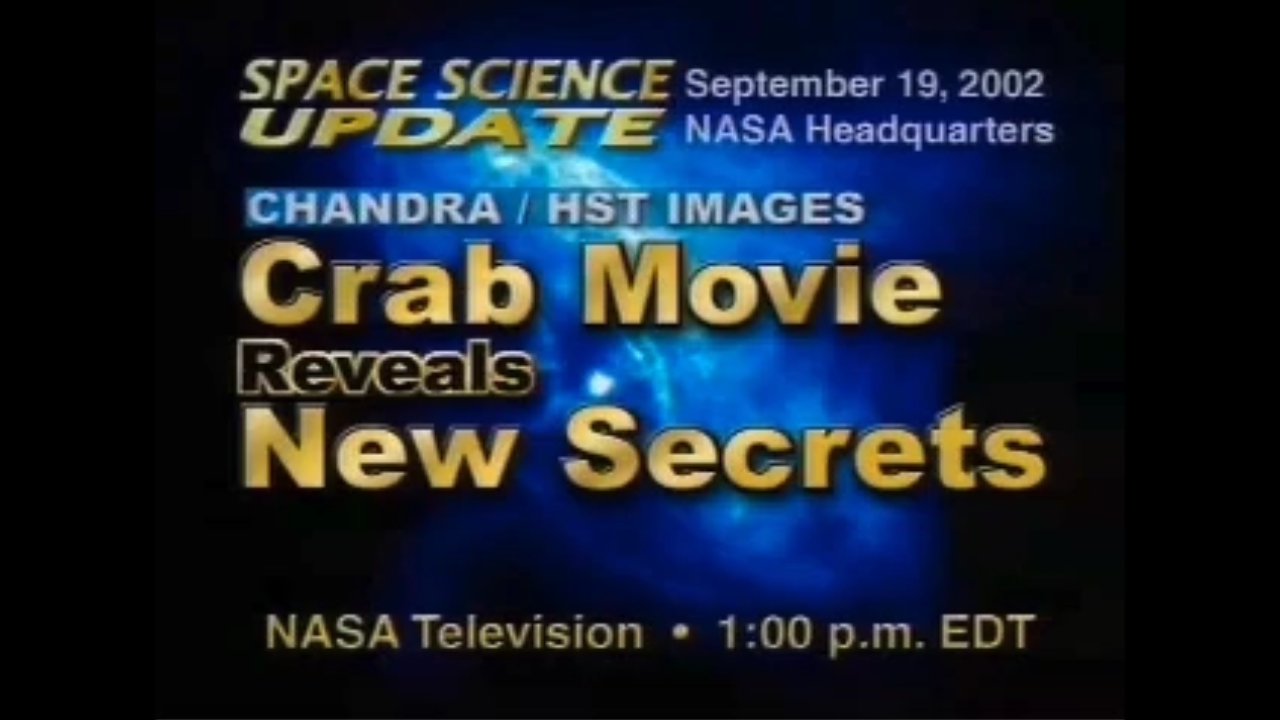1 min read
Combined X-Ray and Optical Images of the Crab Nebula

A composite image of the Crab Nebula showing the X-ray (blue), and optical (red) images superimposed. The size of the X-ray image is smaller because the higher energy X-ray emitting electrons radiate away their energy more quickly than the lower energy optically emitting electrons as they move.
About the Object
- R.A. PositionR.A. PositionRight ascension – analogous to longitude – is one component of an object's position.05h 34m 31.96s
- Dec. PositionDec. PositionDeclination – analogous to latitude – is one component of an object's position.22° 0' 52.09"
- ConstellationConstellationOne of 88 recognized regions of the celestial sphere in which the object appears.Taurus
- DistanceDistanceThe physical distance from Earth to the astronomical object. Distances within our solar system are usually measured in Astronomical Units (AU). Distances between stars are usually measured in light-years. Interstellar distances can also be measured in parsecs.About 6,000 light-years (1,850 parsecs)
- DimensionsDimensionsThe physical size of the object or the apparent angle it subtends on the sky.The image is 2.24 arcminutes across
About the Data
- Data DescriptionData DescriptionProposal: A description of the observations, their scientific justification, and the links to the data available in the science archive.
Science Team: The astronomers who planned the observations and analyzed the data. "PI" refers to the Principal Investigator.Principal Astronomers: J. Hester and P. Scowen (ASU), C. Michel (Rice U.), J. Graham (UC Berkeley), J. Gallagher (U. of Wisconsin-Madison), A. Watson (UNAM - Morelia), R. Sankrit (JHU) J. Hester (ASU), K. Mori (Penn State U. and Osaka U.), D. Burrows (Penn State Univ.), J. Gallagher (U. of Wisconsin-Madison), J. Graham (UC Berkeley), M. Halverson (U. of Wisconsin-Madison), A. Kader (ASU), F. C. Michel (Rice Univ.) and, P. Scowen (ASU) - InstrumentInstrumentThe science instrument used to produce the data.HST>WFPC2 and CXO>ACIS
- Exposure DatesExposure DatesThe date(s) that the telescope made its observations and the total exposure time.April 6, 2001, Exposure Time: 40 minutes (WFPC2), and April 6, 2001, Exposure Time: 6.5 hours (ACIS)
- FiltersFiltersThe camera filters that were used in the science observations.WFPC2 F547M and ACIS-S
- Object NameObject NameA name or catalog number that astronomers use to identify an astronomical object.Crab Nebula, M1, NGC 1952
- Object DescriptionObject DescriptionThe type of astronomical object.Supernova Remnant
- Release DateSeptember 19, 2002
- Science ReleaseSpace Movie Reveals Shocking Secrets of the Crab Pulsar
- Credit

Color Info
Color InfoA brief description of the methods used to convert telescope data into the color image being presented.
Blue (X-ray): ACIS-S Red (Optical): WFPC2 F547M
Related Images & Videos
Share
Details
Last Updated
Aug 17, 2025
Contact
Media
Claire Andreoli
NASA’s Goddard Space Flight Center
Greenbelt, Maryland
claire.andreoli@nasa.gov

































